Introduction
Meetings: the unavoidable ritual of the workplace! Love them or hate them, they’re generally at the core of how teams communicate, plan, and collaborate. But let’s be real – how many of those hours you spent in conference rooms or on Zoom calls actually lead to meaningful work?
I’ve also attended my fair share of meetings that left me wondering, “Was this really the best use of my time?” If you’re a manager juggling deadlines, team dynamics, and ambitious goals, chances are you’ve asked yourself the same thing.
Did you know an average employee spends 31 hours monthly in unproductive meetings? Yes, you read it right! That’s nearly a full week lost in terms of productivity! And yet, we keep scheduling them, hoping they’ll bring clarity and progress. Instead, they often result in frustration and wasted energy.
It’s not that all meetings are pointless. It’s that most are poorly run. When meetings are ineffective, they drain the energy and focus we need for actual work.
Sound familiar? If so, you’re not alone. From endless status updates to vague agendas, the issues are clear:
- Too many meetings: You spend more time discussing work than actually doing it.
- Unclear purpose: Many meetings lack structure, leaving participants wondering why they’re there.
- Wasted opportunities: Instead of empowering teams, meetings can become a routine chore.
However, it doesn’t have to be this way. In this article, I’ll share proven strategies, many of which I’ve honed at ProofHub, to help you stop wasting time in meetings and boost your team’s productivity.
Whether it’s learning to say no to unnecessary meetings, adopting smarter tools, or rethinking how you approach collaboration, we’ll tackle the root causes of meeting fatigue head-on.
After all, “Time is money.” Let’s make sure your team’s time is spent on what really matters: getting meaningful work done.
Why do meetings often fail to deliver value?
Let’s face it, meetings are a part of every manager’s life. But how many of those meetings actually leave you feeling energized and productive?
Sadly, many don’t. Around 83% of employees spend up to one-third of their workweek in meetings. That’s a significant chunk of time that could be spent on actual, impactful work.
So, why do so many meetings fall short? Here are some common culprits:
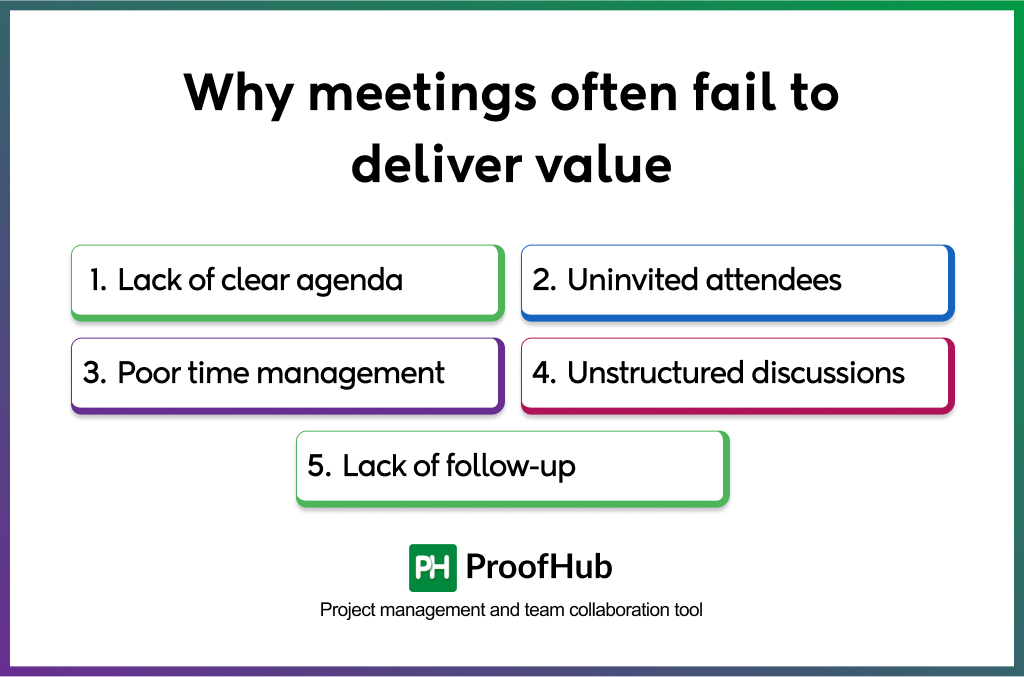
1. Lack of clear agenda or objectives
How many times in your meetings, “We need to talk about this…” translates to “I have no idea what to talk about?” A major meeting obstacle is the lack of a clear agenda or defined objectives.
Without a structured plan, discussions often go off track, wasting precious time and leaving attendees feeling lost and frustrated.
2. Uninvited attendees or attendees who don’t contribute
Uninvited attendees or those who don’t contribute can derail a meeting’s momentum. Their presence can lead to off-topic discussions and wasted time for everyone involved.
Not only do they waste their own time, but they also distract others and hinder productive conversations.
3. Poor time management and excessive meeting durations
“Just five more minutes…” can turn into an hour. These exceeding minutes are a constant source of frustration.
When meetings drag on, attendees become disengaged, their attention wanes and valuable time is squandered.
4. Unstructured discussions and rambling
“Let’s brainstorm…” becomes a free-for-all. Unstructured discussions and constant rambling from everyone can quickly turn a focused meeting into a chaotic mess.
Without clear guidelines and a facilitator to keep things on track, important decisions can get lost in a sea of irrelevant chatter.
5. Lack of follow-up and accountability
“We’ll follow up…” often becomes “We forget.” This is a common reason why meeting outcomes fail to materialize.
If action items aren’t clearly assigned, deadlines aren’t set, and progress isn’t tracked, meetings become little more than expensive talk sessions.
What are the signs of unproductive team meetings?
We’ve all been there. Meetings that drag on, minds wandering and leaving with more questions than answers. But meetings don’t have to be time-consuming.
Managers can take control and ensure their teams maximize their valuable time by identifying the warning signs of unproductive meetings.
Here are some signs of unproductive team meetings:
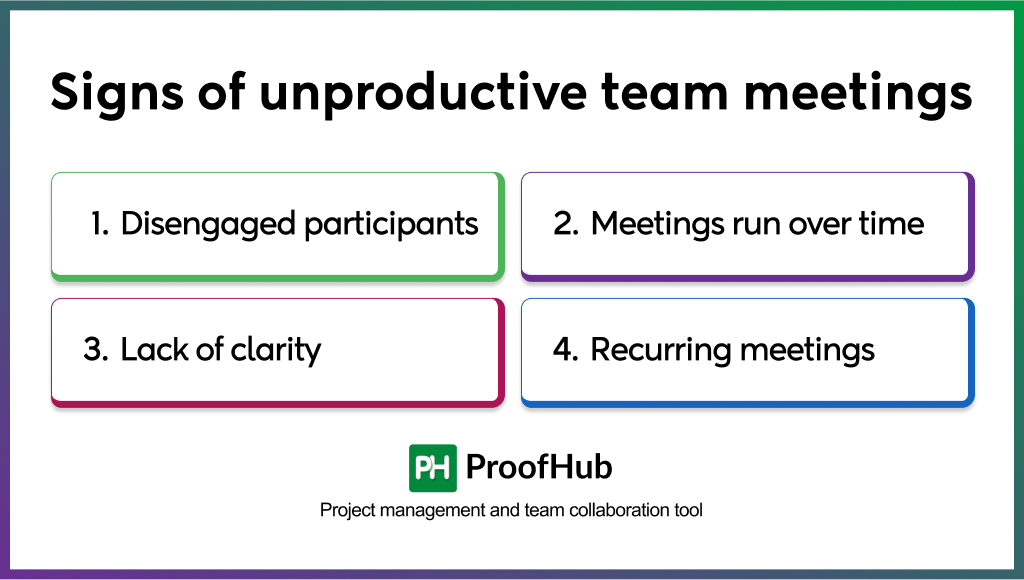
- Disengaged participants: Are your team members checking email, scrolling through social media, or simply daydreaming during meetings? This not only wastes their time but also disrupts the flow of discussion and prevents valuable contributions.
Explore these amazing team meeting ideas to improve your team’s engagement!
- Meetings run over time: Does your team consistently run over the allotted meeting time? This disrupts schedules and signals a lack of focus and a poor agenda.
- Lack of clarity: Leaving a meeting without clear action items and assigned responsibilities is a recipe for inaction. If you can’t pinpoint who is responsible for what by the end of the meeting, valuable time and energy will be lost in follow-up emails and unclear communication.
Explore top 11 meeting minutes software to capture your meeting talks and document minutes of the meetings!
- Recurring meetings: Do you have recurring meetings that seem to serve no purpose? Many companies fall into the trap of scheduling regular meetings simply because they’ve always done so, even if they no longer serve a valuable function.
The hidden cost of ineffective team meetings
We’ve all been there. Meetings that drag on lack clear objectives and leave us feeling exhausted instead of energized.
But what’s the true cost of these time-consuming gatherings?
Believe it or not, it’s much more than just the hours lost during the meeting itself.
1. Financial impact
Wasted meeting time directly means wasted money. These meetings cost businesses an estimated $37 billion annually in the USA alone. Imagine what you could achieve with even a fraction of that money redirected into strategic goals.
Consider this simple calculation – for a team of 10 managers earning an average of $50/hour, a single unnecessary hour-long meeting costs $500. When you multiply that by weekly meetings, the total becomes staggering.
2. Lost productivity
Beyond the direct cost of employee time, unproductive meetings create a ripple effect of lost productivity.
- Distractions and interruptions: A continuous stream of meetings disrupts employees’ workflows, making it challenging for them to concentrate on their essential tasks.
- Context switching: Frequently shifting between meetings and individual work consumes mental energy and time, making it harder to refocus on the task at hand. This constant “context switching” significantly lowers productivity and increases the likelihood of errors.
- Procrastination: When employees anticipate unpleasant meetings, they may unconsciously delay their actual work, resulting in missed deadlines and reduced output.
3. Employee burnout
Ineffective meetings not only waste your time and money but also have a negative impact on employee morale and engagement.
- Frustration and disengagement: When meetings feel pointless and unproductive, your team members become frustrated and disengaged. This leads to decreased job satisfaction and increased turnover rates.
- Burnout: The relentless frequency of meetings can contribute to employee burnout. When team members feel overwhelmed and constantly “on,” they are more likely to experience exhaustion, cynicism, and a diminished sense of accomplishment.
9 Strategies to make meetings more productive
Meetings can either boost productivity or derail it entirely. A study by Doodle revealed that poorly organized meetings cost companies a staggering $541 billion globally in 2019 due to wasted time and resources.
For managers, striking the right balance is critical to ensure that meetings serve their purpose without eating into valuable work hours.
Here are nine actionable strategies that will help you make your meetings more productive and valuable.
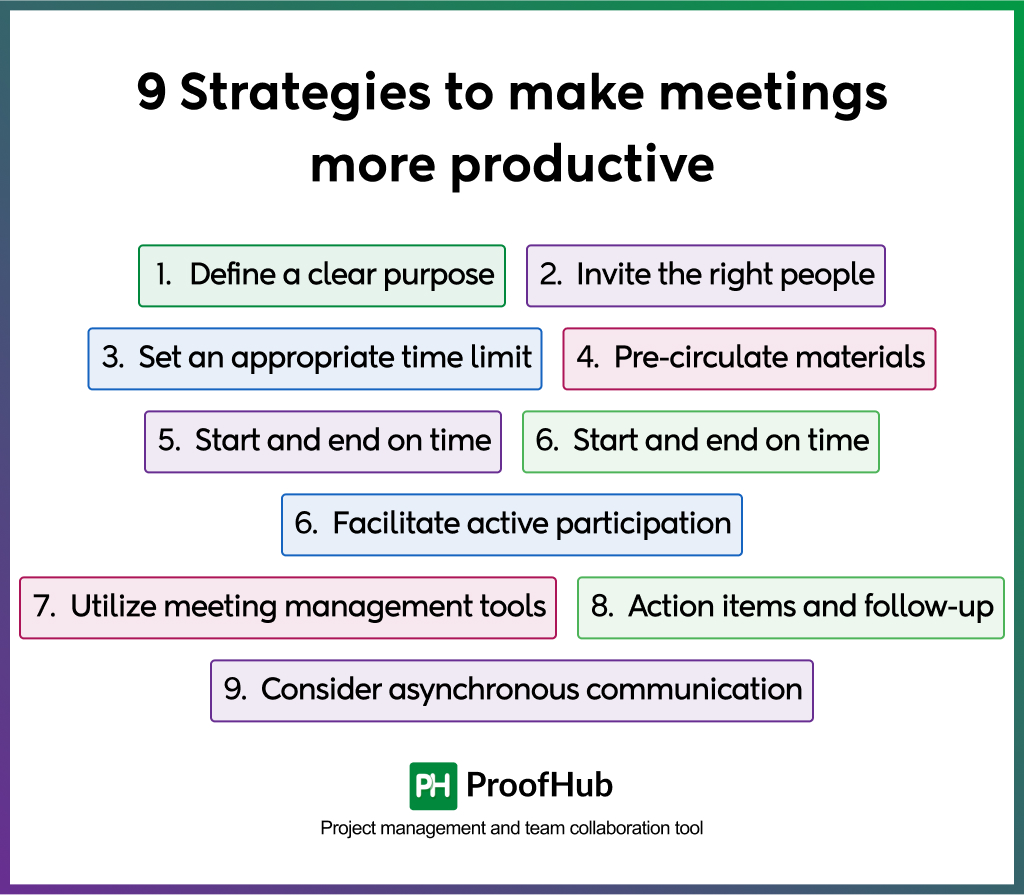
1. Define a clear purpose
Ever walked into a meeting and wondered, “Why am I here?” That’s a sign of a meeting without a clear purpose. Define specific objectives and outline the agenda before scheduling the meeting. Meetings without clarity often lead to circular discussions, leaving everyone frustrated.
Pro tip: Start your agenda with action verbs like “decide,” “plan,” or “review” to make the meeting’s purpose crystal clear. For instance, instead of “Discuss project updates,” you can try “Review project milestones and assign next steps.”
2. Invite the right people
Overcrowded meetings dilute focus and waste time. A smaller group ensures meaningful discussions and quicker decisions. It’s a simple fact: if you organize a brainstorming session in a room full of 20 people, only a handful will contribute while the rest tune out.
Pro tip: Only invite people who are directly involved in the topic or can provide unique insights. Think of it as a kitchen; if too many cooks are available, they will spoil the broth, but the right team creates a masterpiece.
3. Set an appropriate time limit
The average attention span is short, and long meetings often lead to diminishing returns. Shorter sessions with a tight focus are not only more productive but also leave everyone energized.
Pro tip: Try the “40-20-40 rule” – allocate 40% of the time for setting context, 20% for discussions, and the final 40% for wrapping up and assigning action items.
4. Pre-circulate materials
A meeting shouldn’t be the first time attendees encounter key information. You need to share materials, reports, or presentations in advance to allow participants to come prepared. It’s like showing up to a book club meeting having read the book—everyone is ready to engage.
Pro tip: Use tools like ProofHub to organize and share documents effortlessly. This also minimizes the “can you share that again?” moments during the meeting.
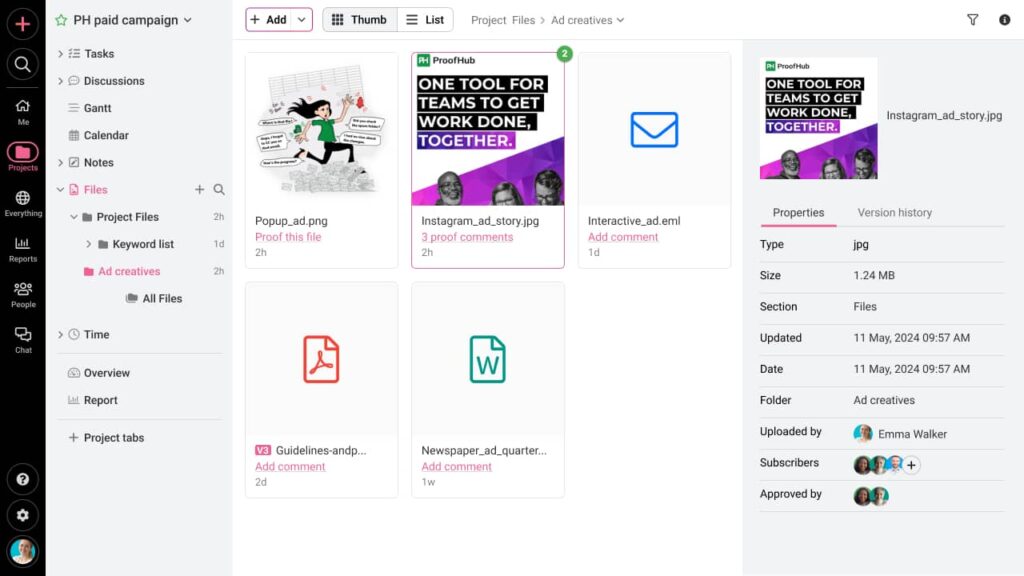
5. Start and end on time
Starting late or running over time signals a lack of respect for attendees’ schedules. Punctuality sets the tone and keeps the meeting disciplined. Think of time as currency – every extra minute spent is an investment (or a loss) for the team.
Pro tip: Appoint a timekeeper or use a visual timer to remind everyone of the schedule gently. Ending five minutes early can often leave a stronger impression than dragging past the clock.
6. Facilitate active participation
Ever noticed how some people dominate the conversation while others stay silent? Engage everyone by asking for their input directly and setting ground rules for discussions. Meetings thrive when they’re inclusive. Sometimes, the quietest person in the room has the best idea waiting to be heard.
Pro tip: Use techniques like round-robin sharing or anonymous polling for balanced participation. For example, you can say, “Let’s hear one idea from everyone before moving forward.”
7. Utilize meeting management tools
Modern problems need modern solutions! Tools like ProofHub simplify meeting management by streamlining agenda creation, sharing notes, and assigning tasks. They also reduce the clutter of managing meetings through emails and random spreadsheets. A well-organized meeting makes sure that everything flows seamlessly.
Pro tip: You can use ProofHub to streamline your meetings. It offers robust features like discussions, shared notes, shared calendar, and many more to keep your meetings efficient and actionable.
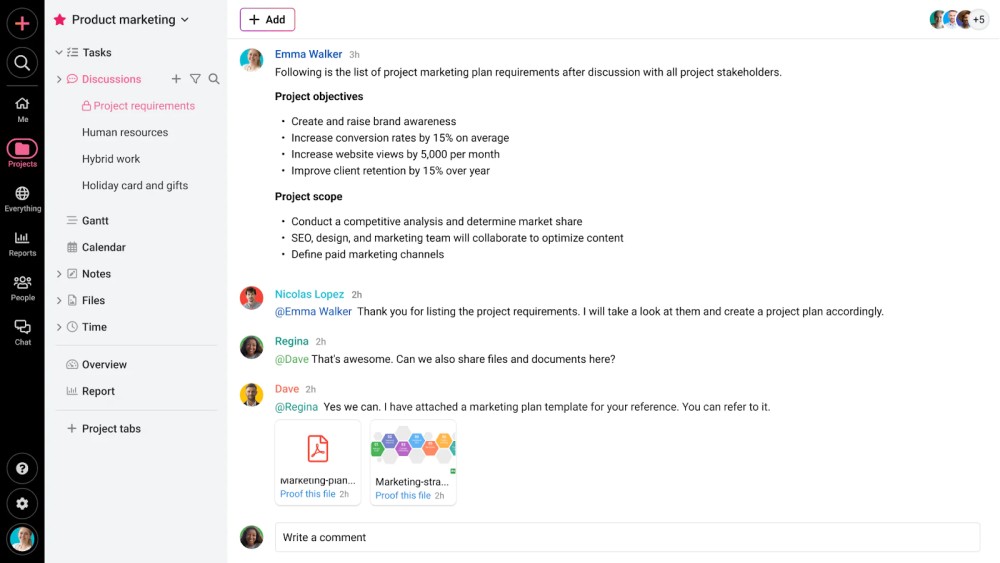
Schedule your meetings, events, tasks, teams, and projects easily with ProofHub. Sign up for a 14-day free trial now! (No credit card required)
8. Action items and follow-up
A meeting without any action item or follow-up is the same as a movie without any ending – unsatisfying and incomplete. Assign clear, measurable tasks before wrapping up, and set deadlines for follow-ups. Actionable meetings make sure that ideas don’t just float away but are anchored into work plans.
Pro tip: Take meeting notes and summarize key takeaways in ProofHub shared notes or discussion boards. A quick, two-minute recap at the end of the meeting can also help you make sure that everyone is on the same page.
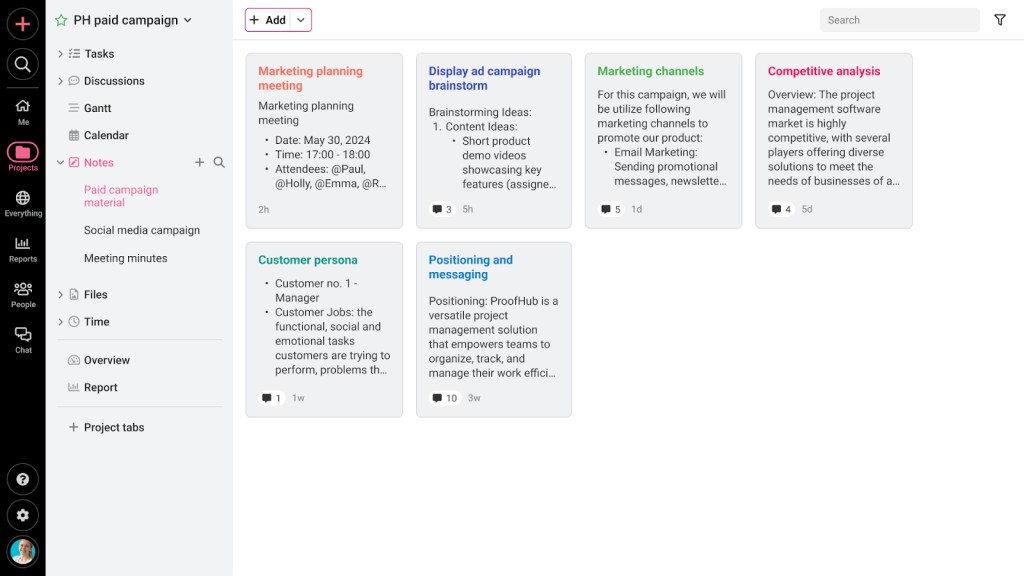
9. Consider asynchronous communication
Not all conversations need a meeting. You can use a tool like ProofHub to handle many discussions, allowing you to focus more on important tasks. Asynchronous communication can help you work efficiently without being intrusive.
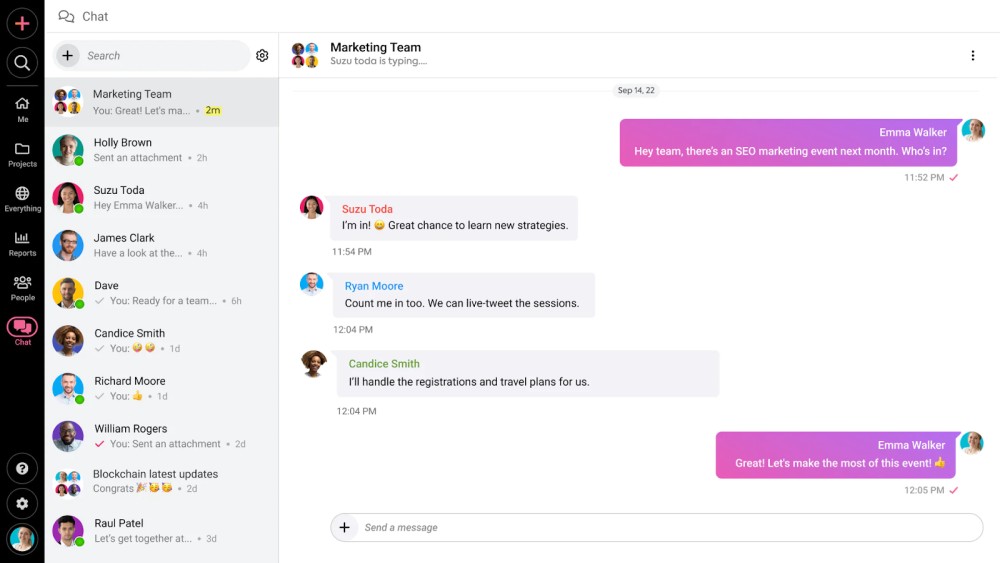
Pro tip: Before scheduling any meeting, ask yourself this simple question: “Can this be solved with a quick message or a shared document?” Sometimes, collaboration doesn’t need everyone in the same (virtual) room.
How to break free from the cycle of unproductive meetings
Meetings are essential for collaboration, but when poorly planned or excessive, they can negatively affect your productivity. Endless discussions without clear outcomes make your team feel drained and unfocused.
The good news is that you can break free from this cycle and reclaim your valuable time. Here’s how you can do it:
1. Self-assessment
- Evaluate meeting practices: Honestly assess your current meeting culture. Ask yourself these questions – What meetings are truly essential? Are they well-prepared and focused? Are decisions being made and action items clearly defined?
- Identify time-wasters: Pinpoint the main problems or hurdles, such as rambling discussions, off-topic conversations, lack of clear agendas, and ineffective decision-making processes.
- Cancel the unnecessary: Not every conversation needs to be a meeting. Be ruthless in canceling meetings that serve no real purpose.
- Restructure recurring meetings: Shorten the duration of regular meetings. Try organizing your meetings differently (e.g., stand-up meetings and online meetings with video turned off to minimize distractions).
2. Gather employee feedback
- Conduct surveys: Anonymously survey your team to understand their meeting frustrations. Find out – What are their biggest pain points? Which meetings are most valuable, and which are a waste of time?
- Use feedback to refine: Use the data to refine your meeting practices. Address the most pressing concerns and implement changes based on employee input.
3. Take action
- Foster a productivity-first mindset: Jeff Bezos once said, “If you can’t feed a team with two pizzas, the meeting is too large.” So, encourage a culture that prioritizes actual work over meeting frequency.
- Lead by example: Be mindful of your own meeting habits. Start and end your meetings on time. Always try to stick to the agenda.
- Empower your team: Delegate meeting facilitation and encourage team members to participate and contribute actively.
How can ProofHub help you stop wasting time in meetings?
Meetings should help you make decisions and actions, not drain your time. So, stop wasting your time in such meetings by setting clear goals, inviting the right attendees, and ensuring actionable outcomes.
If you’re a manager managing multiple projects and teams, ProofHub can help you streamline task assignments, centralize communication, and track progress visually, eliminating unnecessary meetings.
Here’s how ProofHub simplifies workflows and helps you reclaim your time:
- Task management: You can create, assign and manage tasks and set deadlines – all within a centralized platform. This eliminates the need for unnecessary meetings to check on task progress. With ProofHub, you can also create detailed task lists, assign roles, and track progress effortlessly.
- Centralized communication: Say goodbye to “quick” catch-up meetings that eat up an hour. ProofHub’s in-app discussions allow your team members to share updates, ask questions, and resolve issues in one place.
- Visual progress tracking: ProofHub’s Gantt charts and Kanban boards offer a clear view of your team’s progress. This eliminates the need for repetitive status updates.
- Discussion boards: If you need input from your team but want to avoid the hassle of coordinating schedules, discussion boards allow for asynchronous brainstorming and decision-making. This gives everyone a voice without requiring everyone to be in the same room or on a Zoom call.

